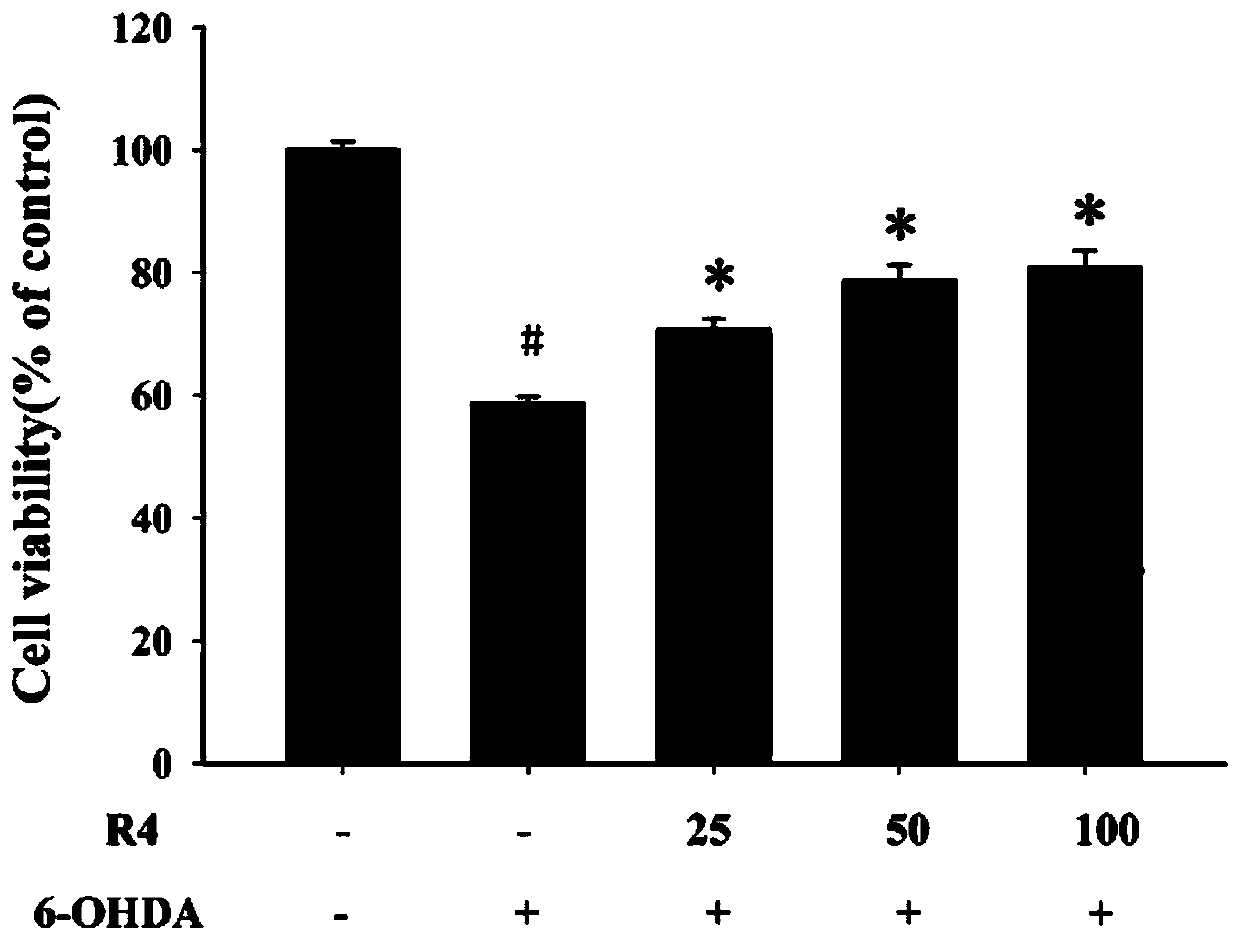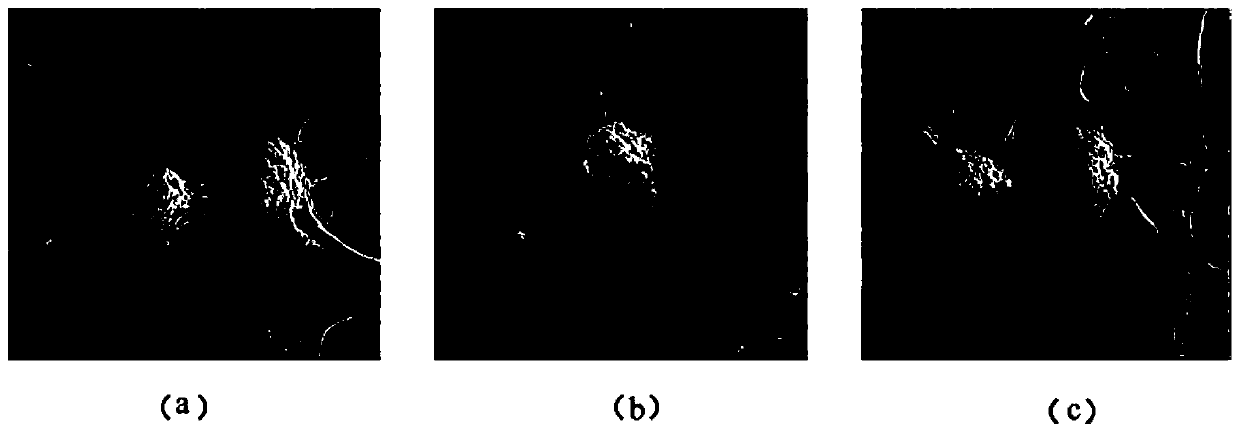Application of Vietnamese ginsenoside R4 in preparation of medicament for treating neurodegenerative diseases
A neurodegenerative, Vietnamese ginseng technology applied in the field of medicine to achieve the effect of reducing cell damage
- Summary
- Abstract
- Description
- Claims
- Application Information
AI Technical Summary
Problems solved by technology
Method used
Image
Examples
Embodiment 1
[0043] Example 1 MTT method detects the toxic effect of R4 on normal PC12 cells
[0044] Experimental materials: Rat pheochromocytoma PC12 was purchased from the American Type Culture Collection (ATCC)
[0045] Experimental procedure: Digest PC12 cells in the logarithmic phase with 0.25% trypsin-EDTA, and then add high-quality protein supplemented with 10% fetal bovine serum, 5% horse serum, 100 μg / mL streptomycin, and 100 units / mL penicillin. Sugar DMEM medium to pipette the cells down to single cells; 5 Cells / mL were inoculated on 96-plates, and drug treatment was performed according to different experimental groups. Among them, the blank group is DMEM complete medium without PC12 cells; the control group is the cell culture medium without R4 and 6-OHDA; liquid.
[0046] The culture medium of each group was in CO 2 Cultivate in the incubator for 24 hours, remove the cell culture medium with a vacuum pressure pump, add 100 μL of MTT stock solution with a final concentrati...
Embodiment 2
[0049] Example 2 MTT method to detect the influence of R4 on the viability of PC12 cells induced by 6-OHDA
[0050] Experimental procedure: Cells in the logarithmic phase were divided into 3×10 5 Cells / mL were seeded on 96-plates and cultured for 24 hours. Set up control group, blank group, 250μM 6-OHDA treatment group, 250μM 6-OHDA+25μM R4 treatment group, 250μM 6-OHDA+50μM R4 treatment group, 6-OHDA+100μM R4 treatment group. In the experimental group, different concentrations of R4 were added for pretreatment for 30 minutes, and then 250 μM 6-OHDA was added for 24 hours. The cell survival rate of each group was measured by MTT method, and the specific steps were as described in Example 1.
[0051] Experimental results such as figure 2 shown by figure 2 It can be seen that the cell survival rate of the 6-OHDA treatment group was 58.76%. Compared with the 6-OHDA treatment group, the cell survival rate of the R4 pretreatment group with different concentrations increased s...
Embodiment 3
[0052] Example 3 Effect of R4 on PC12 Cell Morphology Induced by 6-OHDA
[0053] Experimental steps: Scanning electron microscopy (SEM) was used to observe the morphology of PC12 cells induced by 6-OHDA, cell grouping settings: normal control group, 250 μM 6-OHDA treatment group, 250 μM 6-OHDA+25 μM R4 treatment group, 250 μM 6-OHDA+ 50 μM R4 treatment group, 250 μM 6-OHDA+100 μM R4 treatment group. After cell drug treatment, fix the cells with 2.5% glutaraldehyde fixative, incubate in the incubator for 1 h, wash the cells with PBS solution for 3 times, each time for 5 min, and finally use 30%, 50%, 70%, 90% , 100% ethanol gradient elution to wash the cells twice, 5 min each time. Take the treated cells and observe their cell morphology under SEM.
[0054] See the experimental results image 3 shown by image 3 (a) (Normal control group) The results show that normal PC12 cells have protrusions, and the cells are closely connected to each other to form a network structure; ...
PUM
 Login to View More
Login to View More Abstract
Description
Claims
Application Information
 Login to View More
Login to View More - R&D
- Intellectual Property
- Life Sciences
- Materials
- Tech Scout
- Unparalleled Data Quality
- Higher Quality Content
- 60% Fewer Hallucinations
Browse by: Latest US Patents, China's latest patents, Technical Efficacy Thesaurus, Application Domain, Technology Topic, Popular Technical Reports.
© 2025 PatSnap. All rights reserved.Legal|Privacy policy|Modern Slavery Act Transparency Statement|Sitemap|About US| Contact US: help@patsnap.com



